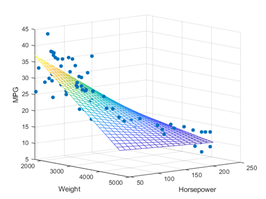C964 Resources#
Examples#
These passing examples have been provided by the evalaution team to help students better understand what’s expected. They are on-par with average passing tasks. Use them as a guideline for what evaluators accept in fulfillment of the requirements. To best represent what might be accepted, we’ve made no corrections.
WGU Capstone Excellence Archive
The Capstone Excellence Archive includes a wide range of completed projects. Reviewing them may help get ideas, provide inspiration, and understand the requirements. However, keep in mind that they all are above and beyond the requirements. So don’t use these as examples of what’s needed to meet the requirements. For a more down-to-earth example of what’s required, see the examples above.
Warning
Some examples in the archives may follow the old template. Please follow the templates found on this website.
Task 1 Resources#
Topic Approval Form Template#
Waiver Form#
Data#
Any open source data set is freely available for use.
Simulated data
Python library built-in datasets:
sklearn’s data sets (these can be imported directly into your code)
Task 2 Part C (the app) Resources#
Coding#
CS and C964 faculty available for math, data analytics, and coding-related questions.
WGU Programming Center provides support to all WGU students in learning basic programming concepts, R, JavaScript, and Python.
Videos, guides, and Tutorials#
Getting Started on the Capstone#
ML Supervised Classification & Regression Overview#
ML Supervised Learning Classification Coding Example#
Student Presentation#
This presentation was intended for a general audience.
Convolution Neural Networks (CNN)#
CNN Videos#
MIT: CNNs Convolutional Neural Networks - Deep Learning in Life Sciences. This is a great lecture explaining the concepts and terms of a CNNs. The focus is not coding, but understanding what the code does.
Keras with TensorFlow Course - Python Deep Learning and Neural Networks for Beginners Tutorial
CNN Tutorials#
CNNs Coding Tutorials:
General Resources#
Student Resources#
Grammarly.com#
Check your grammar using Grammarly.com ![]() (it’s what the evaluators use). Style is not assessed (blue and green), but even a few grammar mistakes will prevent competency in Professional Communication. The free side has been sufficient, but if using the online app, you sometimes need to wait before mistakes are caught.
(it’s what the evaluators use). Style is not assessed (blue and green), but even a few grammar mistakes will prevent competency in Professional Communication. The free side has been sufficient, but if using the online app, you sometimes need to wait before mistakes are caught.
Warning
Students have reported missed mistakes when using the Google doc Grammarly extension. Therefore, we advise copying content directly into the app or purchasing the premium version and checking grammar in MS Word.
WGU AI Policies#
APA#
Your paper should adhere to APA guidelines. Avoid reference errors by using the MS Word Reference Tool to create and manage references.
Libraries#
Tip
You can search WGU’s library and other open-source libraries using google.scholar.com Go to >’Google.scholar>setting>libraires>’ and then add WGU and other libraries.

Welcome Email#
A Welcome Email
Welcome to C964! See the C964 website for almost everything you need (videos, coding examples, doc examples, templates, etc.).To allow for a broad range of projects, the rubric’s language is necessarily broad but lacks specificity, and the specifics in the task directions contain items not necessarily required. You can ignore the official rubric and directions, the website and the Task 2 template, best outline what’s requried.
Your project must apply machine learning (ML) to solve a problem. Using ML requires data, and fortunately, open, machine-readable datasets are readily available, e.g., Kaggle, Github, etc. Using a dataset, find a question to answer or problem to solve, and then choose that as your “business” problem to solve. Here are some points to consider as you begin to think of a topic for task 1:
The “app” (part C of Task 2 ) is most commonly passed by submitting a Jupyer notebook (.ipynb) and data file (.csv). But you can use whatever tools you like.
Students typically apply ML tools from a Python library to the non-descriptive method and then use whatever is most appropriate for the descriptive method (coding examples)
There is no accuracy or complexity requirement for your models other than it applies some machine learning.
Your submitted project must have a []”user-friendly” interface](https://ashejim.github.io/C964/task2_c/example_sup_class/sup_class_ex-ui.html), but a GUI is not required. This is a CS project (not a software project); evaluators deal with a wide array of technical projects and need a way to review your work.
Task 1 is a preliminary exercise ensuring students begin in the right direction. Changing details from task 1 to task 2 is allowed and typical.
To get some ideas, watch this video and review these examples. Next, complete the topic approval form and email it to me to be signed for approval. Set up an appointment if you have questions, but topic approval does not require an appointment. Following approval, see the C964 Task 2 webpage and get started on Task 2. If you have any questions about a topic, schedule email (fastest) or set an appointment (best for general discussion) -it’s why we’re here!
Bibliography#
Jacob Cohen. Statistical power analysis for the behavioral sciences. Academic press, 2013.
Wikipedia. Travelling salesman problem solved with simulated annealing. 2018. [Online; accessed August 4, 2023]. URL: https://commons.wikimedia.org/wiki/File:Travelling_salesman_problem_solved_with_simulated_annealing.gif.
xkcd. Code quality. [Online; accessed August 11, 2023]. URL: https://xkcd.com/844/.
xkcd. Code quality. [Online; accessed August 11, 2023]. URL: https://xkcd.com/1513/.


